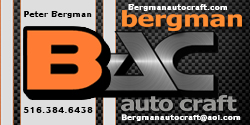CrazyBoutRacin
Member
If you get the right guy, it works! Some of the higher end car detailing folks do it, as well as glass installers, like commercial window and mirror companies do. I’ve literally saved some original windshields doing this!I'm looking to save a windshield that has wiper scratches in it. I will also try it on a wagon back glass if it goes well. Looking around, it seems like it is possible to polish these out.
I'm wondering if anyone here has done it before, is their is a kit or product you used that did the job? Any feedback of your personal experience appreciated.















